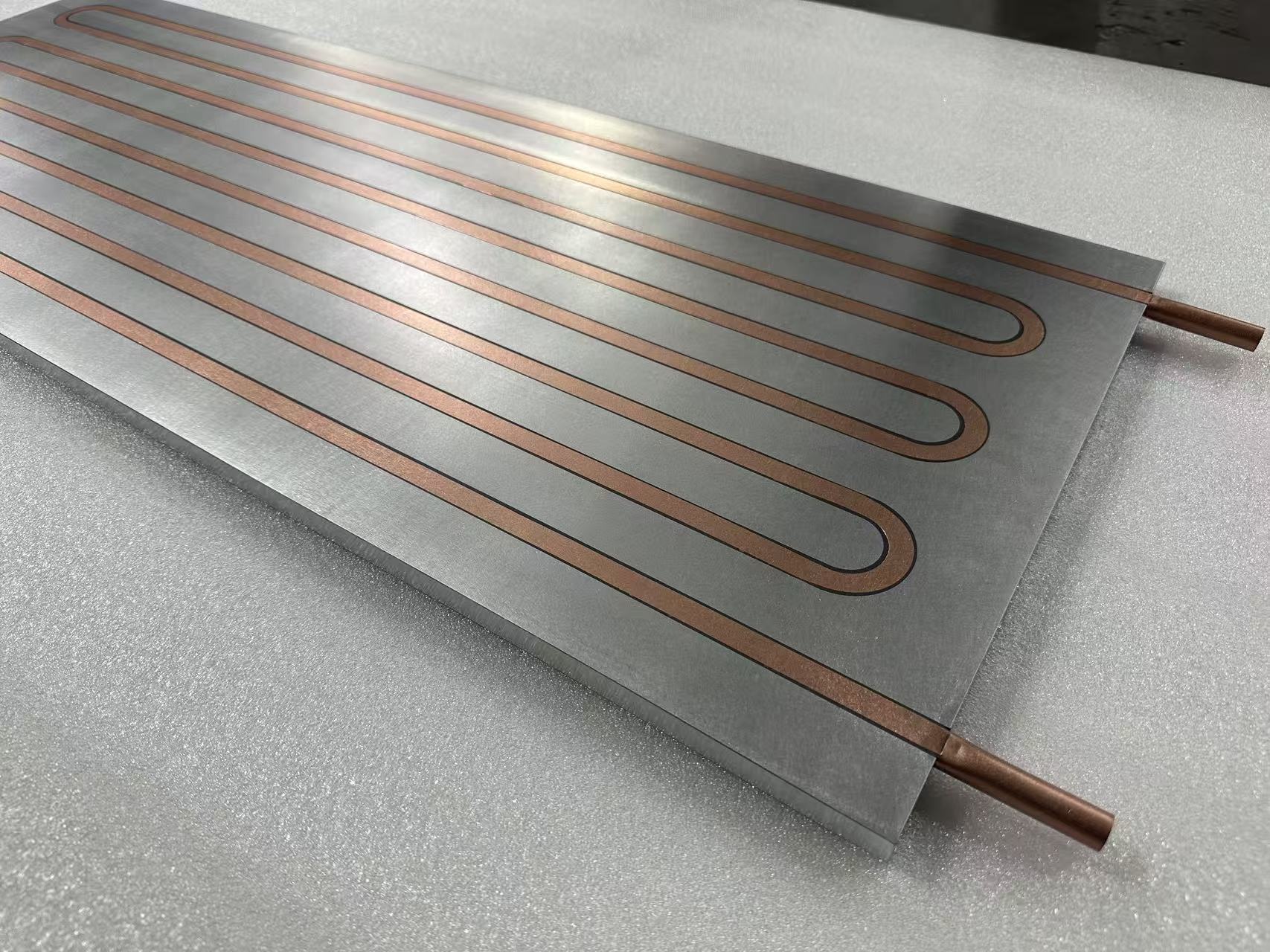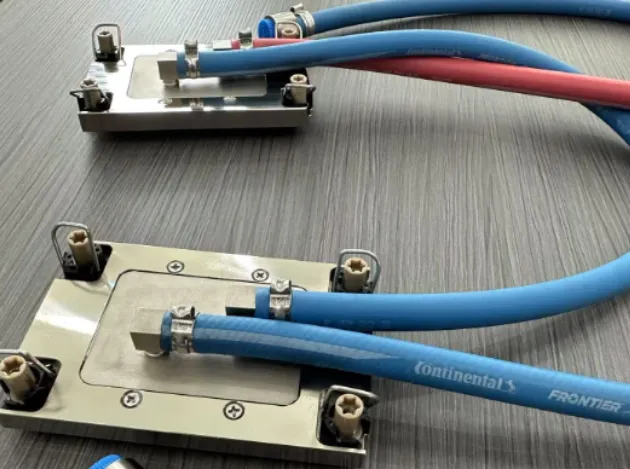As a leading FSW Liquid Cold Plate Manufacturer, Kenfatech is dedicated to advancing the frontier of thermal management technologies. This detailed exploration delves into the intricacies of the FSW (Friction Stir Welding) Liquid Cold Plate, a pivotal innovation in electronic cooling systems.

Understanding FSW (Friction Stir Welding) Technology
Friction Stir Welding, a remarkable technique developed initially for the aerospace industry, has found its way into various applications, revolutionizing how materials are joined. Using a non-consumable tool to generate frictional heat, FSW joins materials in a solid state, offering superior joint strength and integrity compared to traditional welding methods.
Historical Development and Applications of FSW
The inception of FSW dates back to 1991, developed by The Welding Institute (TWI) in the UK. Since then, its application has expanded from aerospace to automotive, shipbuilding, and now, in manufacturing advanced cooling systems like the FSW Liquid Cold Plate.
The Liquid Cold Plate Technology
Introduction to Liquid Cooling Systems
In contrast to conventional air cooling, liquid cooling systems offer enhanced efficiency, vital in high-performance computing and electronic devices where heat dissipation is crucial.
Components and Working Principles of a Liquid Cold Plate
A typical liquid cold plate comprises an internal network of channels through which a coolant fluid circulates, absorbing heat from the attached device. The heat is then transferred to a secondary location, often a heat exchanger, where it is dissipated.
Advantages of Liquid Cold Plates over Air Cooling Systems
Liquid cold plates, such as those manufactured by Kenfatech, offer several advantages:
- Enhanced Cooling Efficiency: They can transfer heat more effectively than air coolers.
- Scalability and Versatility: Easily adaptable to various applications and power densities.
- Noise Reduction: Quieter operation compared to fans in air cooling systems.
Integration of FSW in Liquid Cold Plates
The incorporation of FSW technology in the fabrication of liquid cold plates marks a significant advancement. Kenfatech, as a leading FSW Liquid Cold Plate Manufacturer, harnesses this technology to produce cold dishes with superior thermal performance.

Benefits of Using FSW in Cold Plate Manufacturing
- Enhanced Thermal Conductivity: FSW ensures a uniform material structure, improving thermal conductivity.
- Constant Cooling: The seamless joints FSW make for a more consistent cooling surface.
- Durability: The solid-state joint created by FSW is typically more robust than the base material, ensuring longevity.
Applications of FSW Liquid Cold Plates
Use in High-Performance Computing and Data Centers
In high-performance computing, effective thermal management is not just a necessity; it’s a critical component of system design. Kenfatech’s FSW Liquid Cold Plates ensures that servers and data centers operate efficiently, maintaining optimal temperatures even under substantial thermal loads.
Importance in Electric Vehicle Battery Cooling Systems
The rise of electric vehicles (EVs) has brought new challenges in thermal management. With their superior cooling capabilities, FSW Liquid Cold Plates are integral in maintaining battery temperatures, directly impacting the performance, safety, and lifespan of EV batteries.
Other Industrial and Electronic Cooling Applications
FSW Liquid Cold Plates, beyond the computing and automotive sectors, find applications in medical equipment, renewable energy systems, and aerospace technologies, demonstrating their versatility and importance across industries.

Design Considerations for FSW Liquid Cold Plates
As a renowned FSW Liquid Cold Plate Manufacturer, Kenfatech emphasizes several critical design aspects:
Material Selection
Materials like aluminum and copper are commonly used due to their excellent thermal conductivity and machinability. The choice depends on thermal performance requirements, weight considerations, and cost.
Design Factors Affecting Thermal Performance
- Channel Design: The layout and size of the internal channels significantly influence the cooling efficiency.
- Surface Area: Increasing the surface area enhances heat transfer capabilities.
- Customization: Each application may require tailored designs for optimal performance.
Manufacturing Process of FSW Liquid Cold PlatesStep-by-Step Explanation of the Manufacturing Process
- Design and Prototyping: Initial designs are created, considering the specific thermal management needs.
- Material Selection: Based on the application, appropriate materials are chosen.
- Friction Stir Welding: The heart of the process, where a non-consumable tool joins the fabric, forming the cold plate.
- Machining and Finishing: Additional machining for precision and finishing processes are applied.
Quality Control and Testing Procedures
Kenfatech adheres to stringent quality control measures, ensuring each FSW Liquid Cold Plate meets high performance and durability standards. This includes rigorous testing for thermal conductivity, pressure resistance, and long-term reliability.
Challenges and Solutions
Common Challenges in Designing and Manufacturing
- Thermal Expansion: Managing different expansion rates of materials.
- Complex Geometries: Designing for intricate shapes while maintaining efficiency.
Solutions and Best Practices
- Advanced Simulation Tools: Utilizing simulation software for precise design.
- Continual R&D: Investing in research and development to overcome technical hurdles.
Future Trends and Developments
Emerging Trends in Liquid Cooling Technology
The future points towards more integrated and intelligent cooling systems, incorporating IoT and AI for more competent thermal management.
Future Developments in FSW Technology
Ongoing advancements in FSW technology will further enhance the capabilities and applications of liquid cold plates, potentially leading to lighter, more efficient designs.
Selecting the Right FSW Liquid Cold Plate for Your Needs
Factors to Consider
- Thermal Requirements: Understanding the specific cooling needs of your system.
- Compatibility: Ensuring the cold plate is compatible with your system’s design and materials.
- Cost-Effectiveness: Balancing performance needs with budget constraints.
As a leading FSW Liquid Cold Plate Manufacturer, Kenfatech offers expert guidance and a range of products to meet diverse thermal management needs.
Conclusion
The FSW Liquid Cold Plate represents a significant leap in cooling technology, essential for numerous high-tech applications. Kenfatech remains at the forefront, continuously innovating to meet the evolving demands of thermal management. Understanding “What is the FSW Liquid Cold Plate” is not just about recognizing a component; it’s about envisioning the future of efficient and effective temperature control in advanced technologies.




